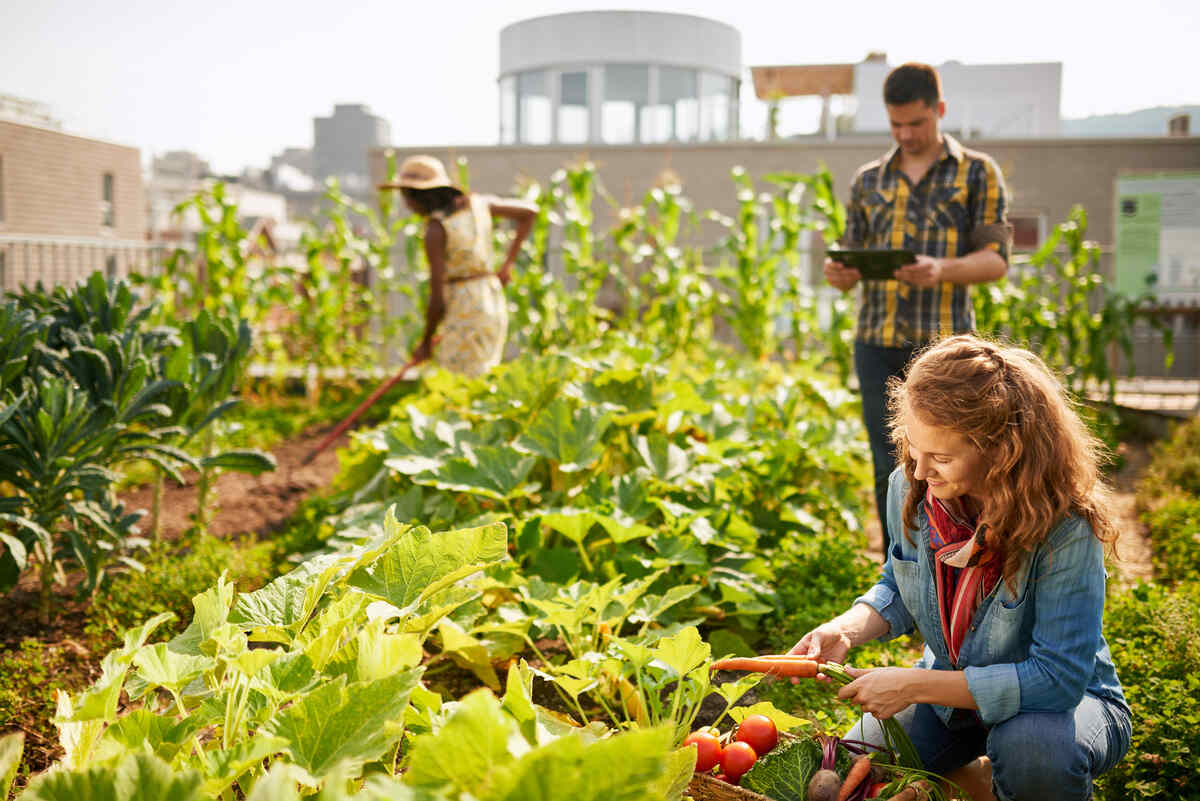How City Blooming can Save You Time, Stress, and Money.
How City Blooming can Save You Time, Stress, and Money.
Blog Article
City Blooming Fundamentals Explained
Table of ContentsThe smart Trick of City Blooming That Nobody is Talking AboutThe Ultimate Guide To City BloomingThe Definitive Guide to City BloomingWhat Does City Blooming Do?Some Known Details About City Blooming
Intrigued in growing food for sale in the City of Chicago? Below is a list of regularly asked concerns concerning the regulations and guidelines that farmers need to consider when preparing a city agriculture job.
The zoning amendment does not change any type of various other codes managing composting, building permits, acquiring or leasing City owned residential property, organization licenses or environmental contamination. There are existing codes that control these concerns and they stay in full impact and might be appropriate to your task. Community yards are usually owned or managed by public entities, public organizations or community-based companies and kept by volunteers.
Urban farms expand food that is intended to be offered, either on a not-for-profit or for-profit basis. Due to their commercial function, metropolitan ranches call for a business permit. Yes. An area yard is allowed to sell surplus create that was expanded on site if the sales are accessory or subservient to the garden's primary purpose explained over.
The Ultimate Guide To City Blooming
The quantity of garden compost product can not go beyond 25 cubic lawns at any type of given time according to the criteria in 7-28-715 of the City's Municipal Code. Due to the fact that the dirt at most new yard sites requires changing, compost, soil, wood chips, or other materials can be gotten to create or enhance the expanding space.

If a building permit is required after that the hoophouse will certainly be considered an accessory structure. You can discover more about the structure permit demands by calling the Division of Buildings. The 25,000-square-foot dimension limit is meant to avoid a solitary area yard from controling an offered block or interfering with the block's existing domestic or industrial character.
The limit does not use to yards located in Public Open Area (POS) areas. Can there be more than one community garden that is 25,000 square feet on a single block? Fencing is not called for, nevertheless, yards that have big vehicle parking locations may be required to mount secure fencing or other landscaping attributes.
All About City Blooming
B1 & B2 areas need that all industrial use activities be carried out inside your home. Is fencing required for urban ranches? Fences may be called for, along with landscape design and testing, for particular vehicle parking areas and exterior job or storage locations depending on place and the particular activity taking area.
Yes. Urban farms call for structure permits and zoning authorizations before construction. Other types of city testimonial may be needed depending on specific structures, activities, dimension, landscaping, licensing, public heath and stormwater monitoring concerns. Much of these demands are identified in the task layout or allowing process, nevertheless, the candidate may additional resources be accountable to separately determine details licenses or permits that might be needed.
Yes. The kind of certificate is figured out by what is occurring at the website. The Department of Company Matters and Consumer Security can help establish the details sort of business license that's called for. Yes. Off street car parking is required for many commercial tasks in Chicago. The needed variety of auto parking areas is based on the number of staff members working on site and not the square video of the growing area.
How City Blooming can Save You Time, Stress, and Money.

An urban ranch can market compost material generated on site, nevertheless, the procedure has to conform with the policies in 7-28-715 of the Chicago Municipal Code. Aquaponic systems are permitted inside on metropolitan ranches in numerous zoning areas.
Up to five hives or colonies of honey may be maintained as an accessory usage. Nonetheless, beekeepers need to sign up with the Illinois Division of Agriculture. To learn more about the suggested zoning change you might call the Division of Real Estate and Economic Development, Bureau of Planning and Zoning at 312.744.8563.
Farming in cities and metropolitan areas An urban farm in Chicago. Urban agriculture refers to various methods of growing. https://cityblooming.edublogs.org/2024/06/27/city-gardening-transforming-urban-spaces/, handling, and dispersing food in urban areas. The term additionally relates to the location activities of animal husbandry, aquaculture, beekeeping, and cultivation in a metropolitan context. Urban farming is identified from peri-urban farming, which occurs in backwoods at the side of residential areas.
The Facts About City Blooming Uncovered
, that seek to develop social networks founded on a shared ethos of nature and area holism. These networks can develop by means of formal institutional assistance, ending up being integrated into neighborhood town preparation as a "transition community" movement for sustainable metropolitan advancement.
Some of the first proof of metropolitan agriculture comes from Mesopotamia.
Report this page